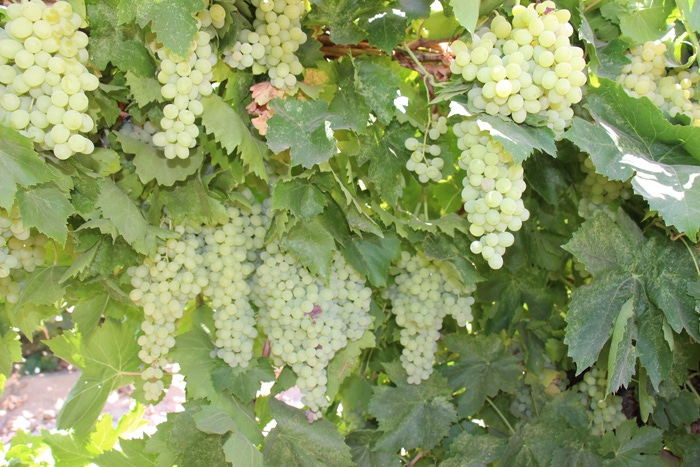
Ten days into May, about two weeks after it started, the Thompson Seedless bloom was coming to a close in California’s raisin country, which lies within about a 60-mile radius of Fresno.
“The vineyards look nice and green,” reports Jerry Rebensdorf, president of the Fresno Cooperative Raisin Growers, Inc. “Bunch counts are 1 to 2 percent under last year, but they seem to have a good size so far. This probably indicates an average-size crop.”
The timing of this year’s raisin bloom is similar to the earlier-than-usual bloom in 2015, he notes. The other raisin-type varieties – Flame Seedless, Selma Pete and Zante currants which mature earlier – began blooming around the middle of April.
This year’s Thompson Seedless bloom was extended by cool, rainy weather, Rebensdorf notes. “If the weather is hot, the bloom can start and finish in as few as four or five days.”
He and other growers are hoping the quality of this year’s raisin crop is better than the previous one. “The quality of last year’s early pick was very poor, because they never developed the needed sugar. The quality improved later in the harvest, but rain caused some sand and mold issues. ”
Despite the on-going drought, the prospects for water to irrigate this year’s raisin crop are much brighter than they’ve been for several years.
“I venture to guess that just about every older well, those drilled 50 to 60 years ago, usually no deeper than about 60 to 100 feet, went dry the past few seasons,” Rebensdorf says.
In 2014, growers here received only enough canal water to irrigate their vines for two months. In 2015, deliveries were cut to just a one-month supply.
“This year local districts are predicting we’ll get up to four months of surface water,” Rebensdorf says. “We’re very happy about that.”
Deliveries by the Fresno Irrigation District began the first of April.to growers south of Fresno and a month later to those north of Fresno, he adds.
Other than some cases of powdery mildew here and there, disease pressure in the raisin vineyards has been low.
With temperatures reaching into the 90s in early May, he’s anticipating mite activity will start before the end of the month. He ranks that insect at or near the top of the list of pest threats to the raisin crop throughout the rest of the season.
Pressure from leafhoppers, which began showing up the first part of May, has varied from light to medium. Usually, growers here combine sprays for mites and leafhoppers in one treatment, he notes.
Meanwhile, California’s raisin acreage continues to dwindle in size. Rebensdorf estimates as many as 15,000 to 20,000 acres were pulled out this past winter and replanted to tree nuts crops, like almonds and pistachio, as growers seek more profitable alternatives.
From a high of $1,900 per ton in 2012, the prices growers receive for their raisins have slid to no more than $1,600 a ton, he notes.
He attributes that to an over-supply of raisins on the world market and the strong U.S. dollar, which has made California raisins more expensive for foreign buyers than those from other countries.
About the Author(s)
You May Also Like




